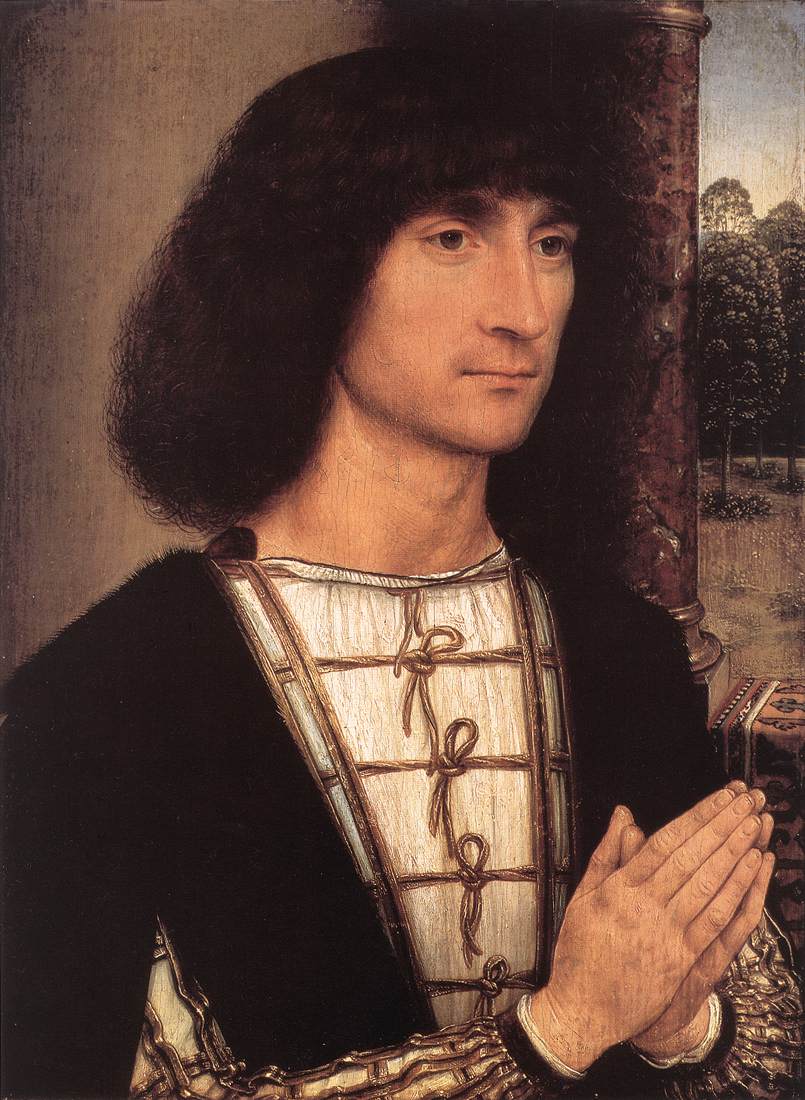
Historical
Oriental Rugs & Carpets
in Medieval European Paintings
Main Page
|
|
Portrait of a Young Man
1485-90
Oil on oak panel, 29,2 x 22,5 cm
Museo Thyssen-Bornemisza, Madrid
By Hans Memling (b. ca. 1440, Seligenstadt, d. 1494, Bruges)

This portrait is a typical example of the genre and its stage of development within late 15th-century Netherlandish painting. While the variegated marble pillar in the background indicates a rather grander setting than, for example, the architecture of Robert Campin, the location in fact plays only a secondary role. Perspective details are lacking, and the distance between the front edge of the picture and the parapet draped with the carpet behind appears to be extremely short. The half length figure of the genteel young man is correspondingly lacking in physical depth; although seen in a three-quarter view which incorporates the room beyond, the positioning of his hands and the elements of his costume convert three-dimensional space into two-dimensional plane. In place of powerful sculptural volumes and a balancing of horizontal and vertical values, we find here an emphasis upon the perpendicular and a precise observation of detail, both in the figure and the clothing, as evidenced by the differentiated modelling of the eyes, the sensitive, slightly asymmetrical drawing of the lips, and above all by the almost photographic rendering of the fingers. Memling displays the same painstaking care in his treatment of the richly trimmed sleeves.
In providing a glimpse of landscape in the right-hand corner, Memling obeys a convention which was common in early Renaissance portraiture and which would remain popular even into the 16th-century. In keeping our view into the outdoors narrow, he neither distracts our attention from the sitter nor influences the mood of the scene.
The panel is the left wing of a triptych. We have to assume that the young man is worshipping a holy figure, probably a Virgin and Child, located in the middle of the loggia. In view of his position on the left, there must have been a young woman in the right wing of what will have been a folding devotional triptych with matching panels of the classic type.
On the back of the a panel a still-life can be found.